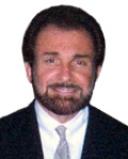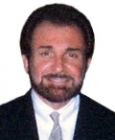Emotional Intelligence
Breaking Through Obsessive Logic on a Harley Davidson
A motorcycle journey toward emotional intelligence.
Posted July 13, 2024 Reviewed by Lybi Ma
Key points
- Threats to emotional intelligence wreak havoc in the workplace.
- A leader demands streamlined communication with customers, where the expression of emotions is taboo.
- A coach is brought in to confront a leader's resistance to emotional intelligence.

Transforming Toxic Leaders (2009) reveals how a troubled authoritarian CEO’s suppression of employees’ emotions negatively affects performance and wreaks companywide havoc. It is not unusual in the 2020s to observe excessively logical and analytically driven leaders who trivialize the softer, interpersonal side of employee behavior, aka emotional intelligence (EI). In the extreme, a leader disallows expressions of emotions in the workplace. In stark contrast to over three decades of industry and academic study and celebration of EI, such corporate leaders reject the touchy-feely side of employee behavior. At stake is a behind-the-scenes corporate conflict for the 2020s and beyond—prioritizing versus the demise of emotional intelligence in the workplace.
Case studies and experience reveal that the wholesale rejection and outlawing of EI may result in a toxic organizational culture characterized by formal workplace grievances, employee and team conflict, escalating turnover, damage to the brand, and HR dilemmas. This is exemplified in the emotionally unintelligent leadership of Ferdinand Jacobson, CEO, of a Fortune 500-based institution headquartered in Manhattan, New York.
Jacobson mandated that his employees function in an emotion-free workplace. (Note: Client anonymity requires altering names and some facts of the case.)
The CEO’s emotion-free workplace morphed into what HR labeled an “emotionally unintelligent” leader and workplace. In addition to social media threats to the brand, Ferdinand’s agenda created dissonance and conflict resulting in grievances filed by two middle managers. During my coaching sessions with the CEO, he boasted how he deeply rejected the “cult of feelings” in his organization. He bluntly proclaimed “emotional intelligence is bullshit. It’s a first cousin of DEI.” The blowback from his direct reports included resistance in the form of combative employees, dysfunctional teamwork, faltering performance and increasing requests for transfers.
Can this seemingly emotionally unintelligent CEO be coached or counseled?
This CEO relishes clarity and brevity. Leadership for Jacobson entails firm authoritarian command and control. Analytics and spreadsheets; a merit-based top-down hierarchy is his legal tender, and in his words, it is “non-negotiable.”
Jacobson confidently proclaims that underlings crave explicit directions on tasks. A serious, ‘emotion-free face and body’ is requested by CEO Jacobson for optimal client service. The word rules. Use your words not your eyebrows. Interpret the contract, not the weather or a recent family illness. Chit-chat and nuance are suspect and officially disallowed.
Elegance is simplicity and service. No excesses. Minimal language. Body language is for stage actors. Employees must control their hands, fingers, mouth, facial muscles, arms, legs, and body during every second of a client exchange. Jacobson speaks in a stern monotone, his vocal cords serving as a megaphone. Away from their stern boss, employees whisper and smirk in fear. One bank teller described the CEO as a “logic-obsessed condescending leader.”
In response to two in-house grievances against the CEO, there were tele-chats and sit-downs with the grievance priest in human resources. Soft-winded, politically delicate conversation targeted allegations of an emotionless work environment. In HR sessions the self-possessed Harvard-trained MBA was unanimously labeled as “emotionally unintelligent.”
Would this CEO continue with his theory X, top-down defiance of a deeply engrained expectation for emotional intelligence?
CEO Jacobson reluctantly agreed to the services of an external consultant and coach. I officially entered the conflict. I had the distinct pleasure of serving as both on- and off-site coach, consultant, psychologist, and confidant to Jacobson. As per HR, emotional intelligence was our mantra, entrée, and focus.
For approximately six months of twice weekly coaching sessions the CEO remained cocky, self-assured, and in methodical, vehement disagreement with emotional intelligence A to Z. This CEO was skilled in turning a mainstream 21st-century workplace expectation of EI into a carnival of argumentation, debate, and conflicting research studies. Falling short of an OCPD (obsessive compulsive personality disorder) diagnosis, Jacobson nevertheless did exhibit four out of the five criteria and had strong obsessive tendencies. He obsessively railed against the institution's EI policy. However, after six months of vigorous debate, the CEO gradually and begrudgingly allowed for the prospect of positive EI attributes in creating a more pleasant, accepting workplace and team environment.
Curiously, seven rocky months of coaching led to the CEO gradually reconnecting with his closely guarded personal wellspring of emotions. While disallowing and reprimanding EI, Jacobson was quite inclusive. He methodically monitored his own behavior intent on achieving an emotion-free approach to his leadership. But when our coaching sessions made a breakthrough, making allowances for selected emotional expression in the workplace, this concurrently opened the doors for Jacobson, himself, to be publicly and professionally expressive.
The direction this EI breakthrough took was novel and unexpected. It took the form of a renewal of the CEO’s youthful passion for Harley-Davidson motorcycles. During a two-week “vacation” from coaching and therapy, Jacobson immersed himself in an emotionally relevant diversion. I received a 24/7 stream of texts and photos. Somewhere in the mountains above Sedona, Arizona, Jacobson texted that he was on his Harley winding through obscure mountain roads. Jokingly serious, he admitted that he was “releasing his inner Brad Pitt and Marlon Brando.” A groundswell of emotions was released on his Harley and soon found expression in his workplace “banking drama.” Ferdinand ‘Brando’ Davidson, seven months into personal training, looked toward the wild Bisbee sky after a third martini proclaiming, “Emotions gush down and through me.” He confessed he was “born again and rejuvenated.” Jacobson asked me to guide him through an EI reincarnation at his institution. “Yes sir,” I replied.
Back at work, the two grievances were the highest priority and were formally resolved within three weeks. Apologies followed. The CEO who dogmatically bought into a narrow view of emotion-free, authoritarian leadership transformed his toxic monologue into a more pliable and resilient give and take.
References
Goldman, A. (2009). Transforming Toxic Leaders. Stanford, CA: Stanford University Press.




